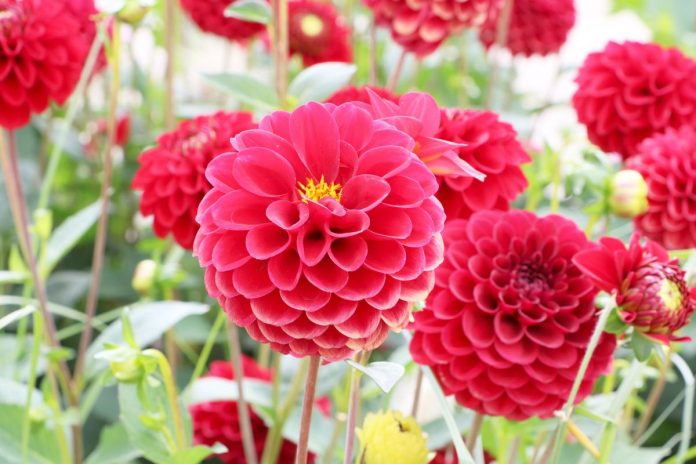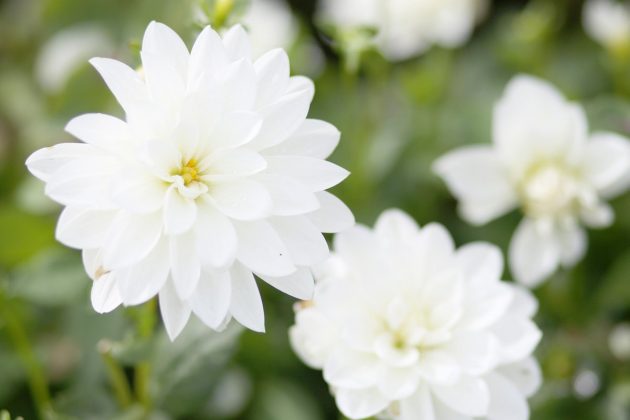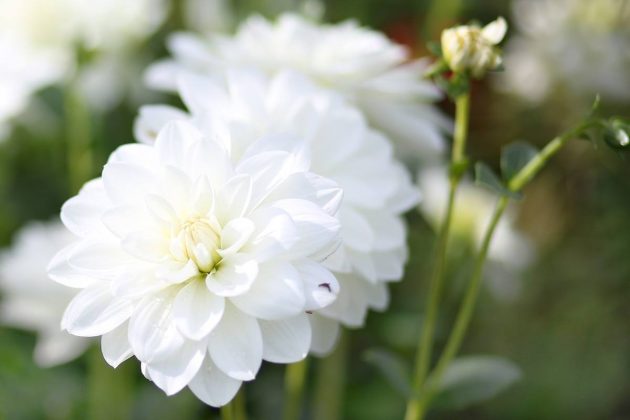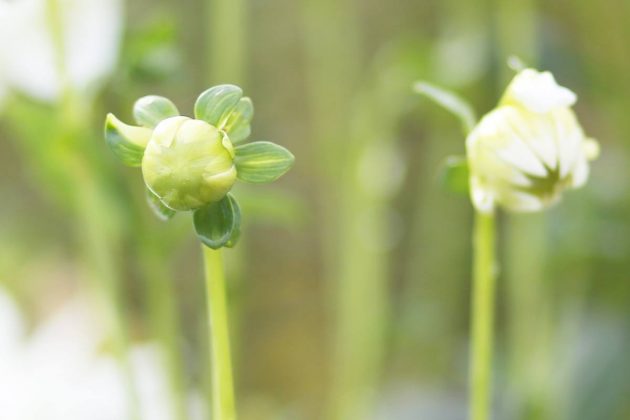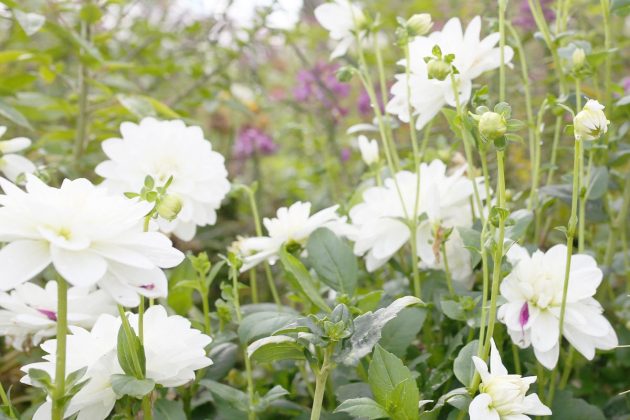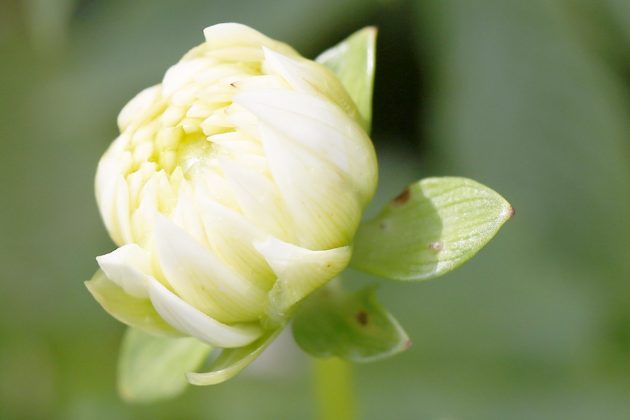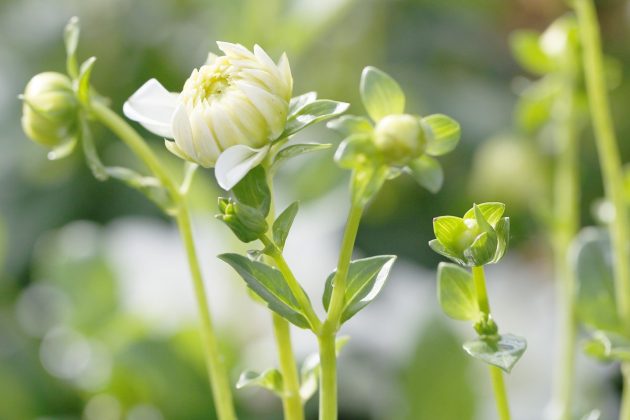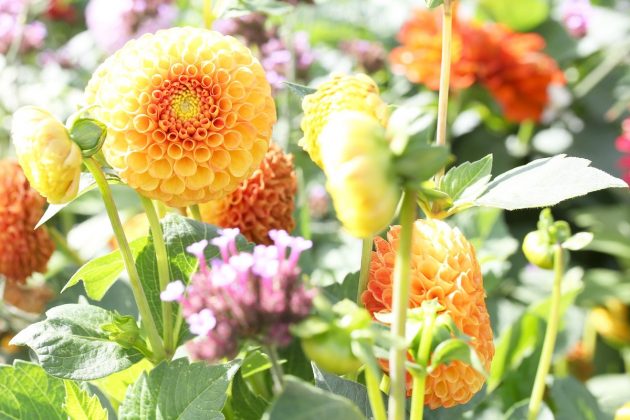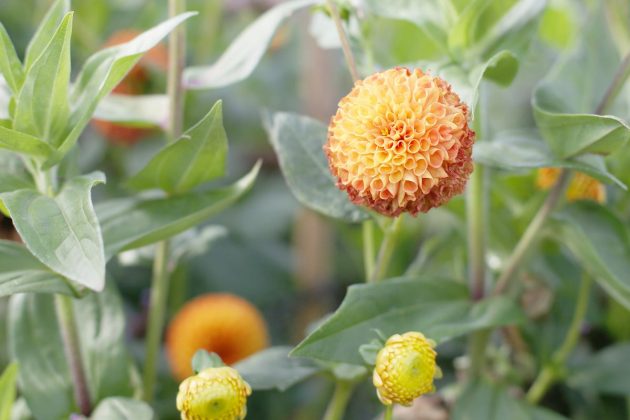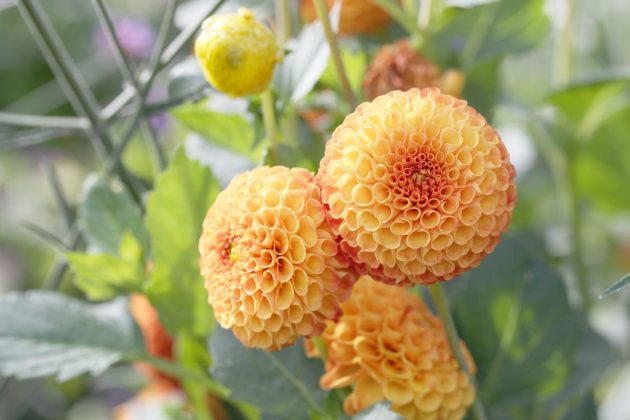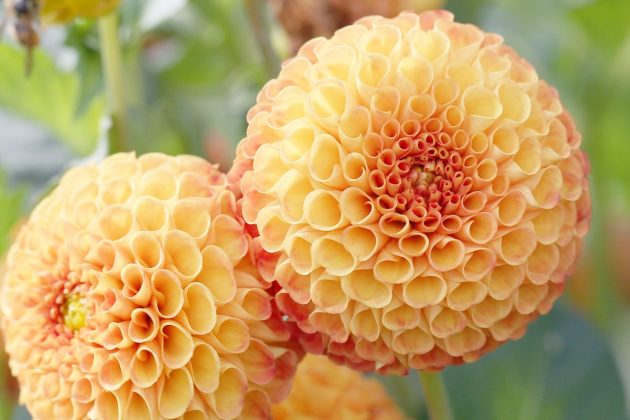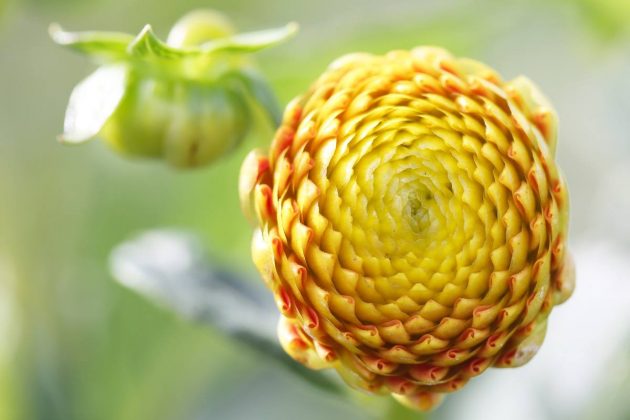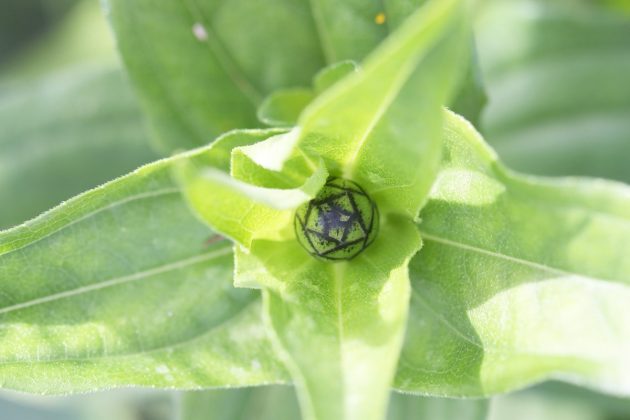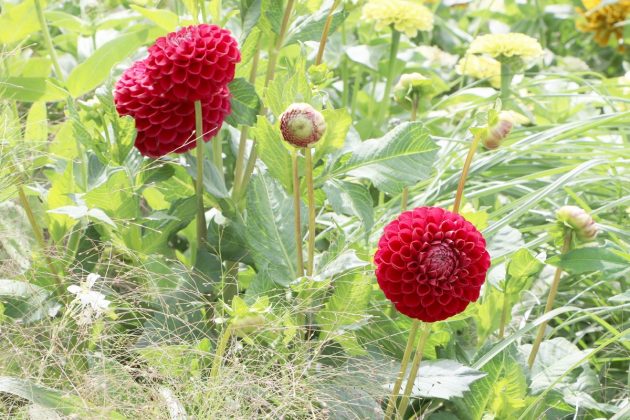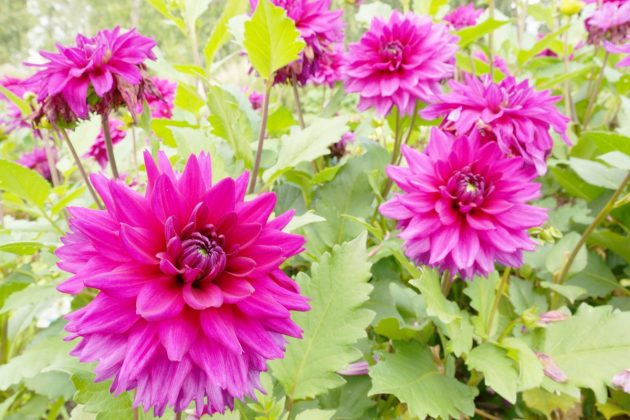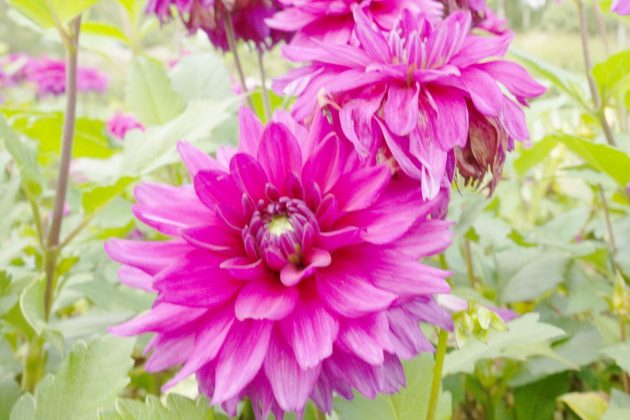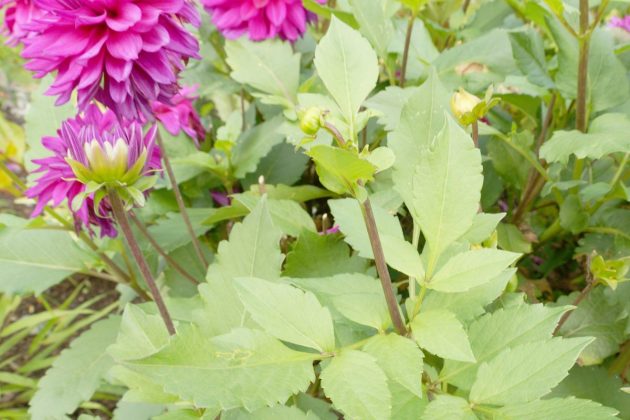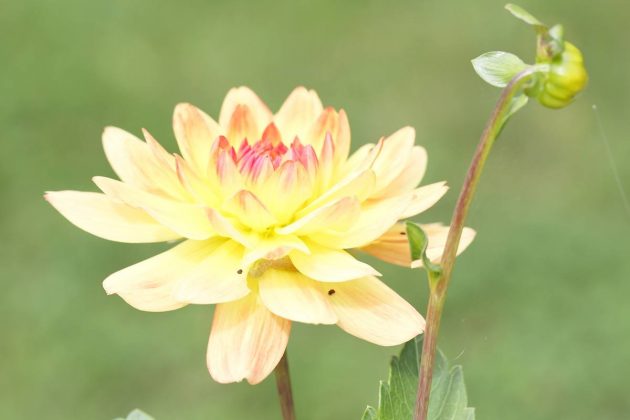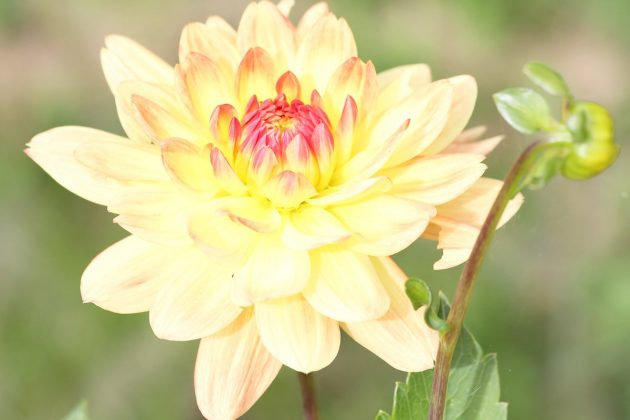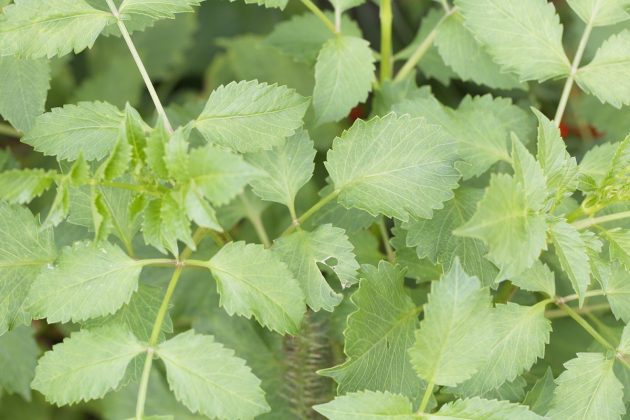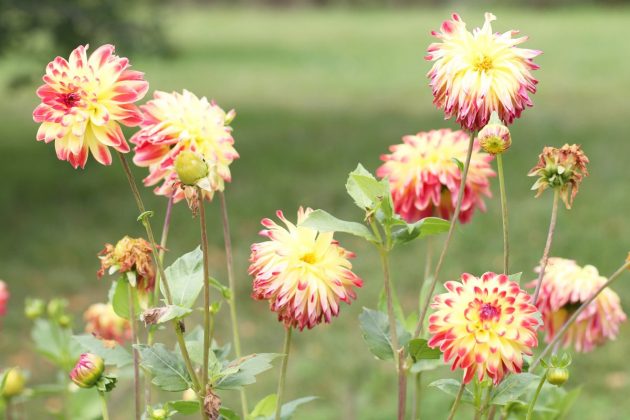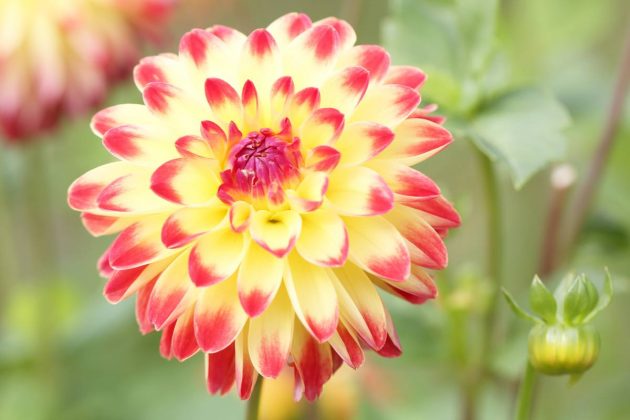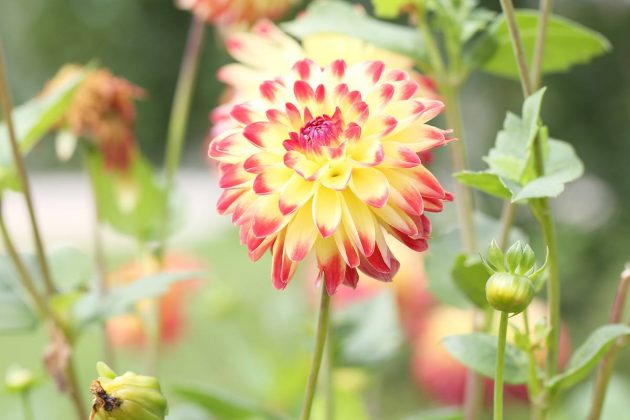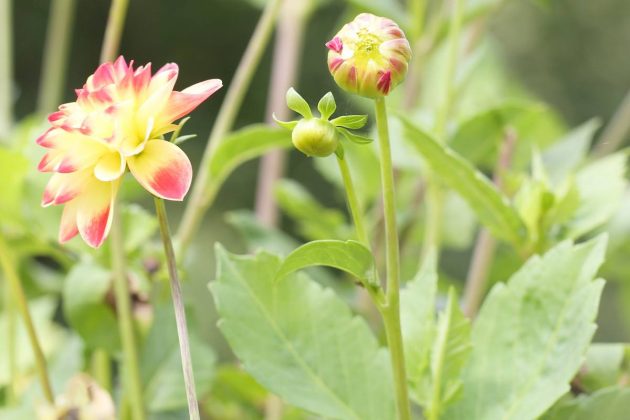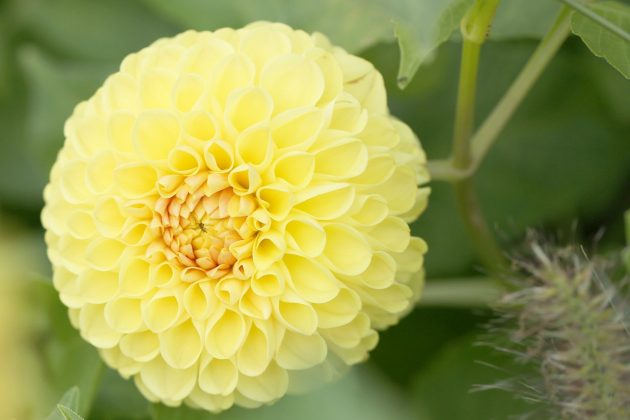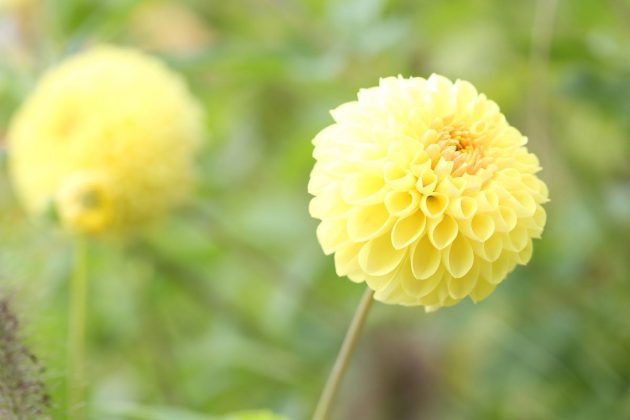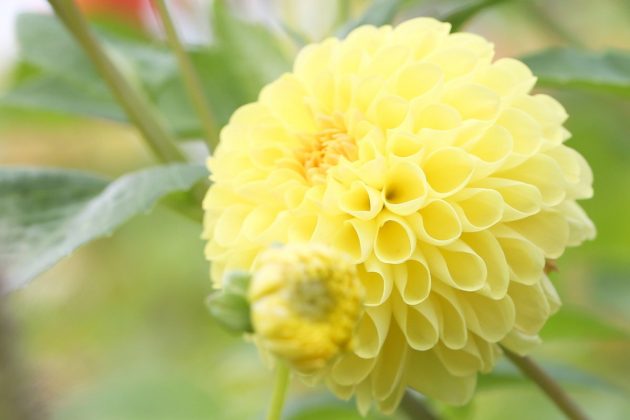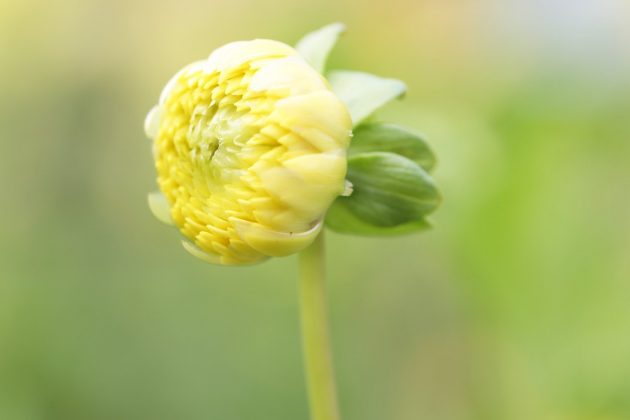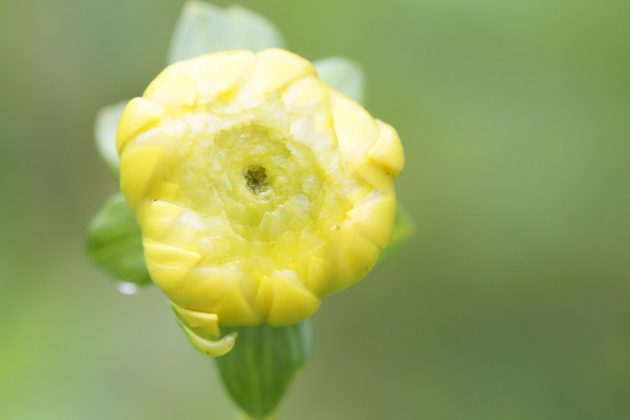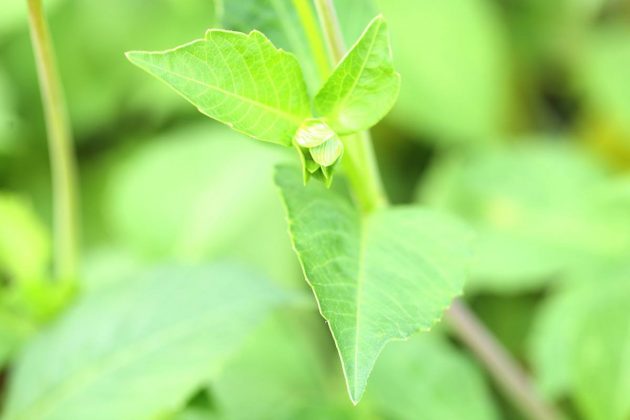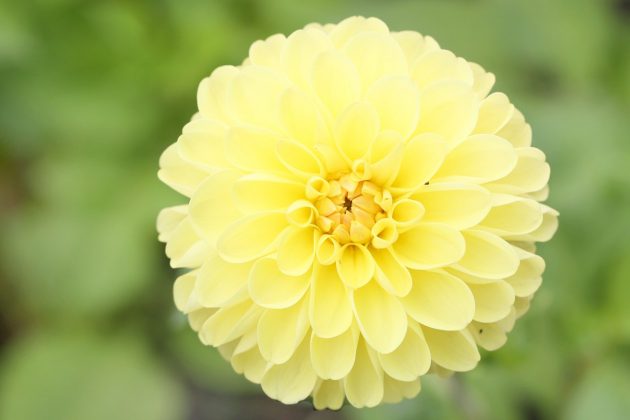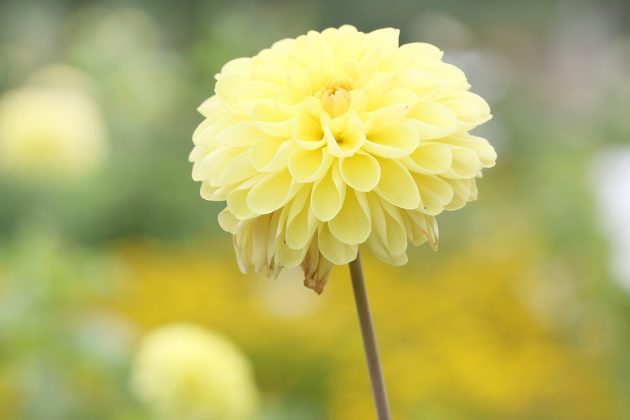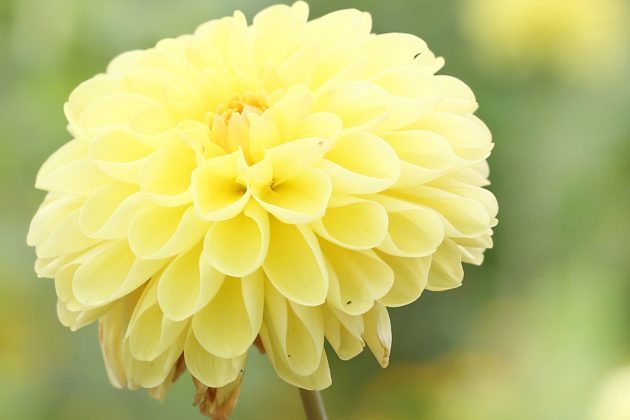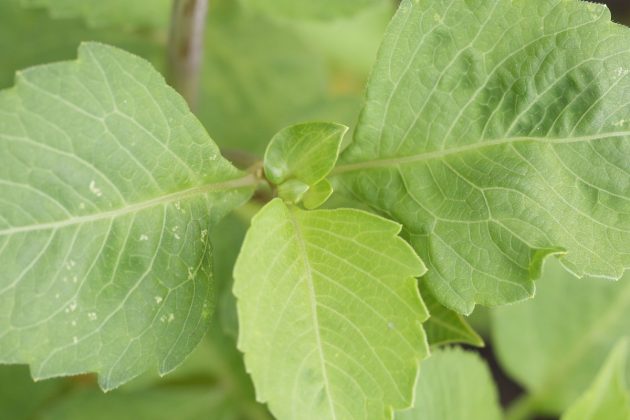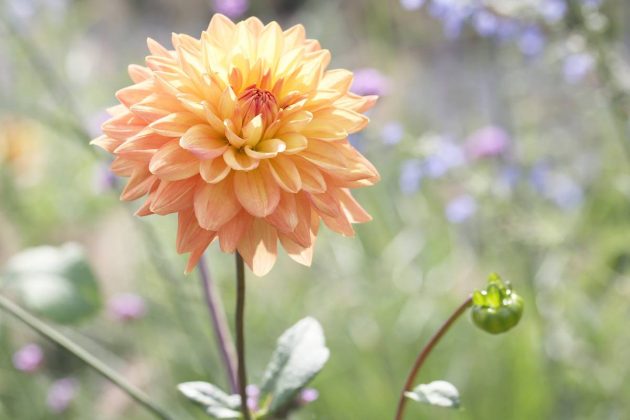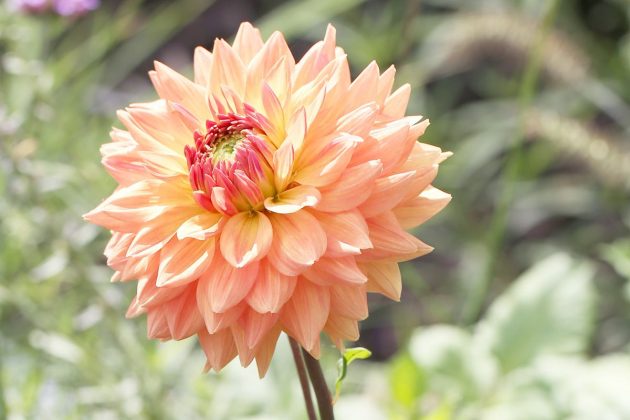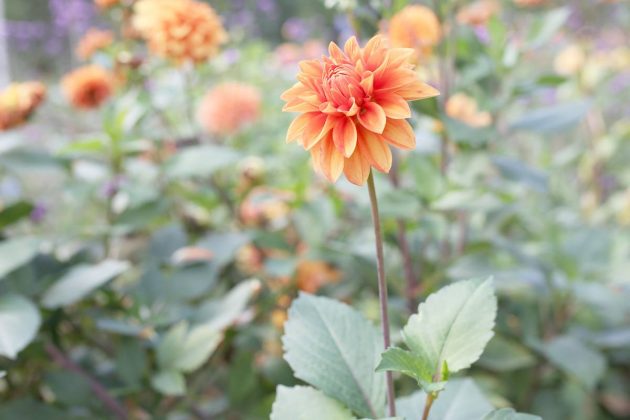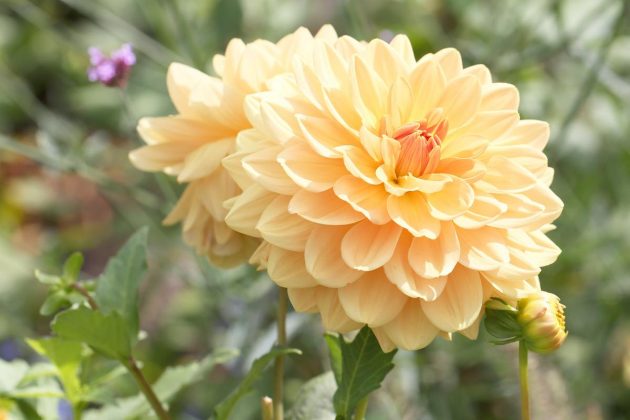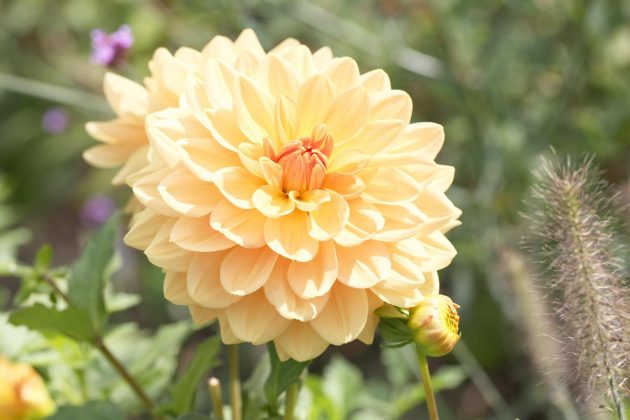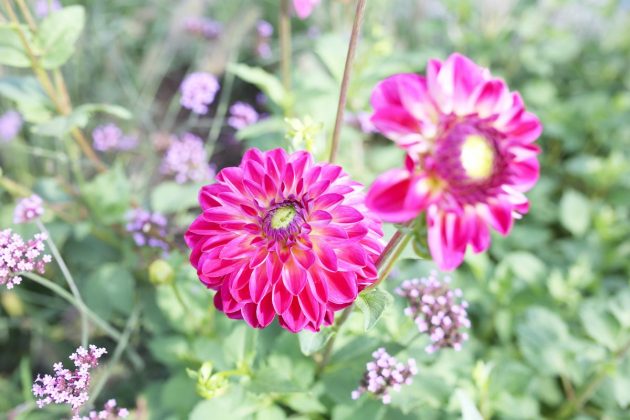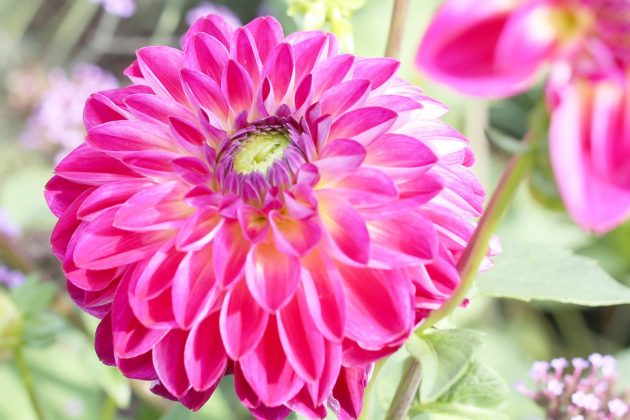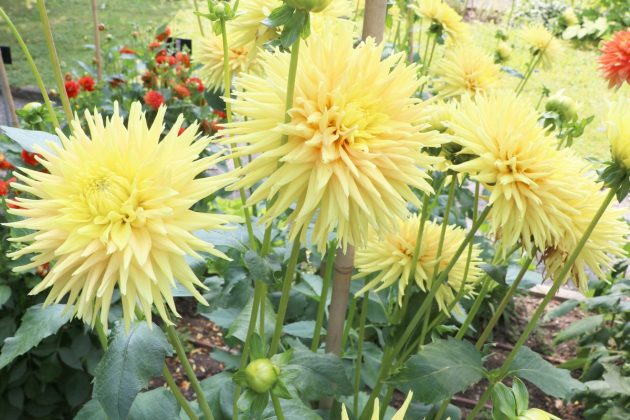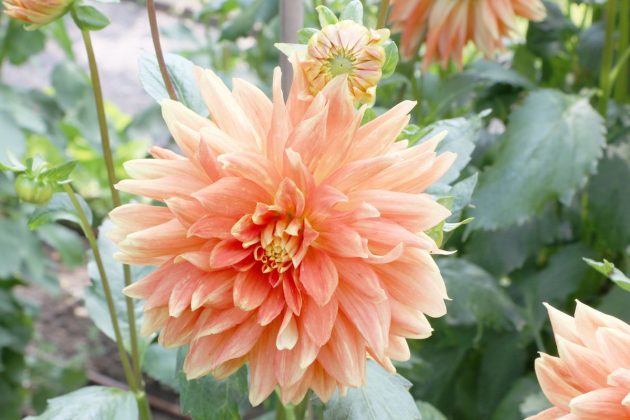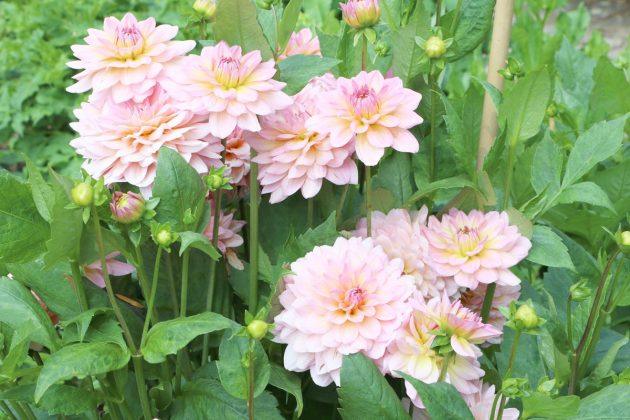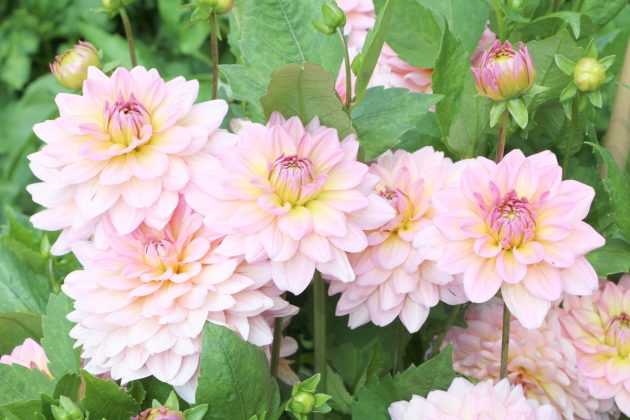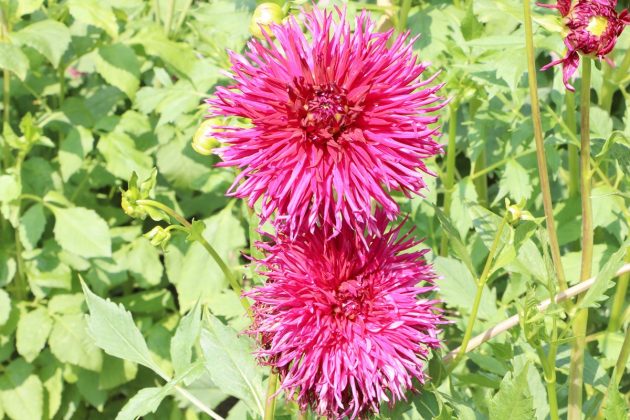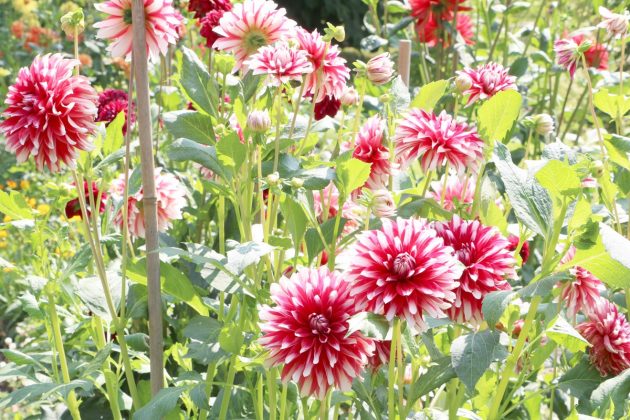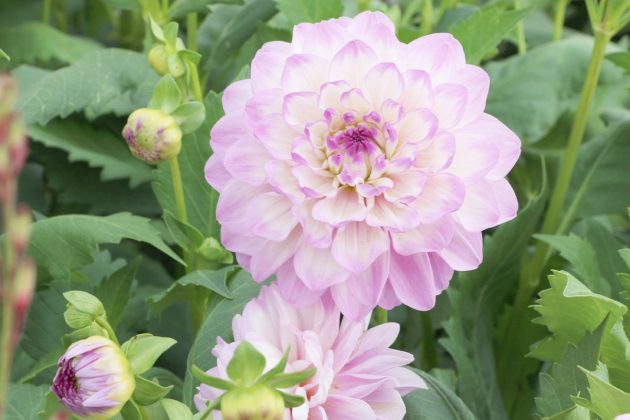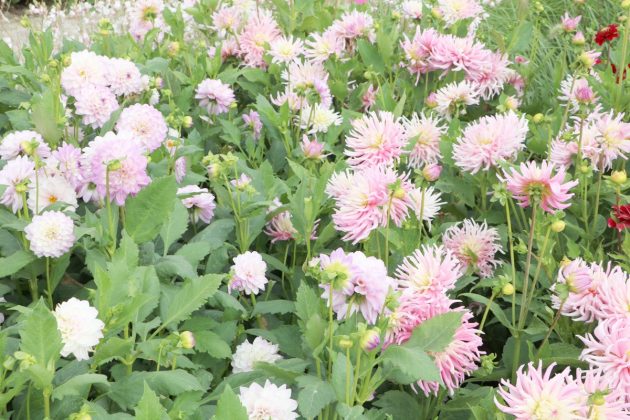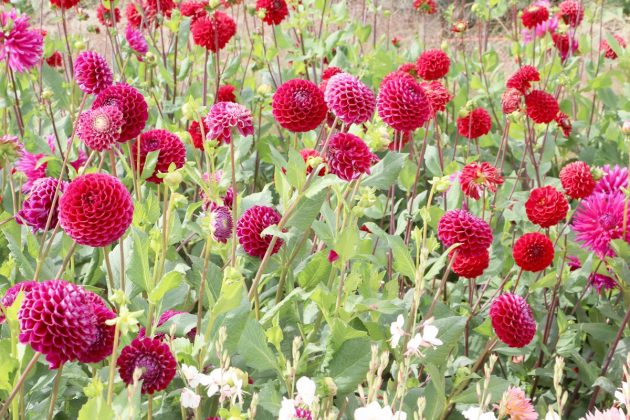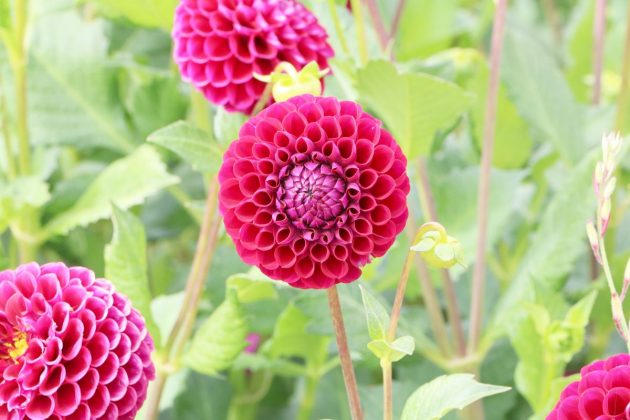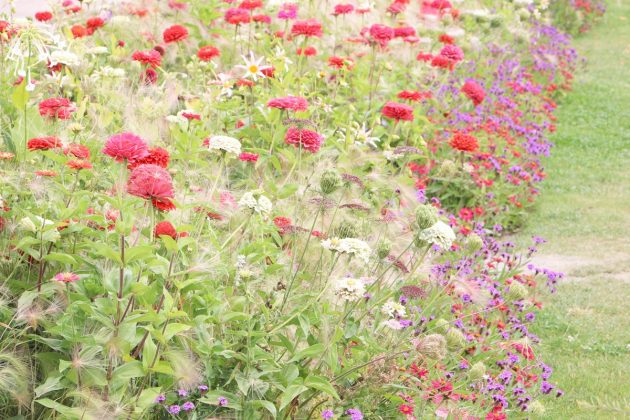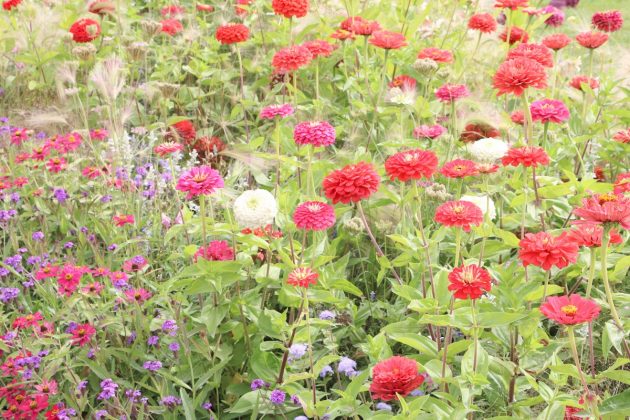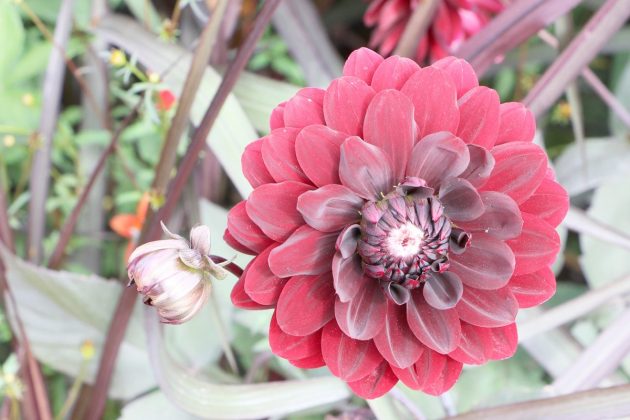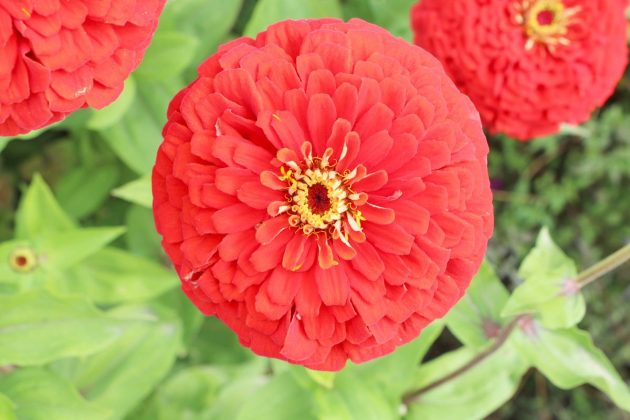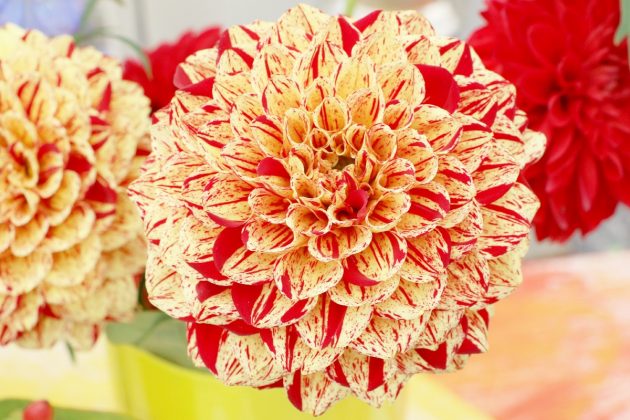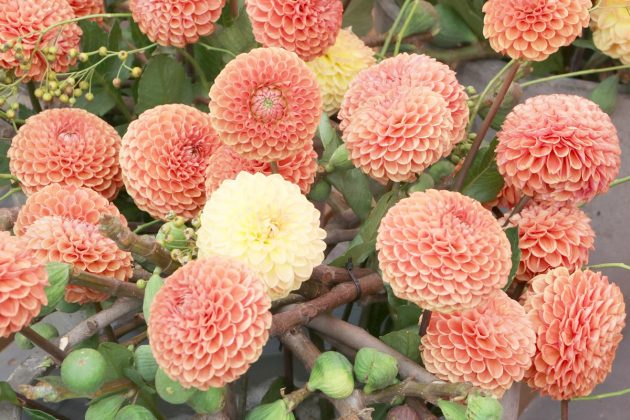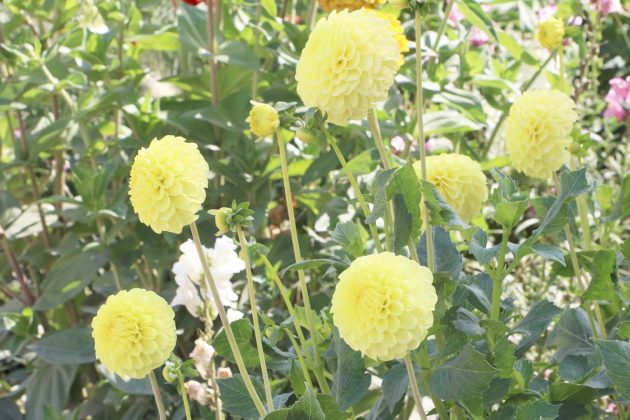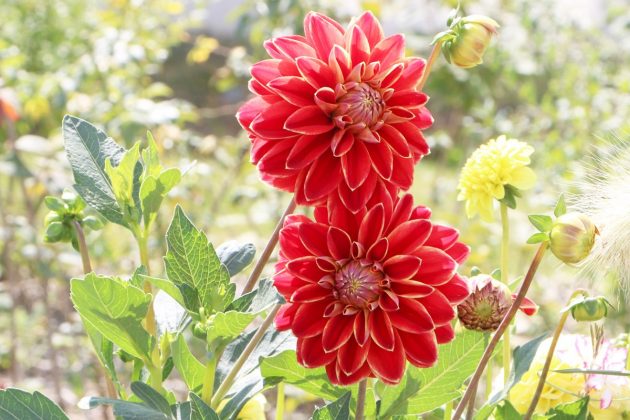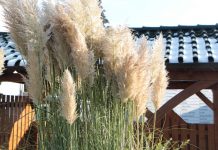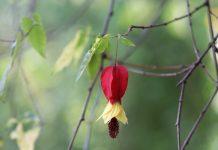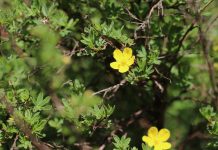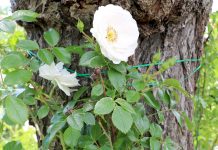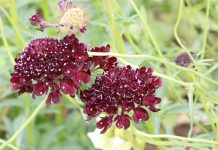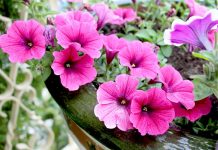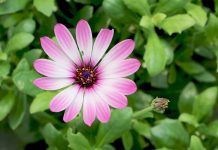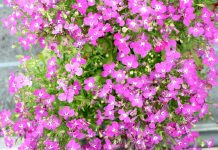In the middle of summer, you can practically hear the starting signal for this year’s flowering of the dahlias. The Southern American flowers enchant tirelessly garden and balcony with an exuberant variety of blossoms and colors well until fall. Fortunately, all the thousand kinds at least pull together when it comes to cultivation. Read here, how to ideally plant, care for and overwinter the dahlia.
Plant Profile
Contents
- plant family of the Asteraceae
- genus Dahlia with 35 types and 20.000 species world wide
- natural habitat in South America, especially Mexico and Guatemala
- thrive as long-lasting tubers in their habitat
- minimum temperature: 5 degree Celsius
- growth height from 30 cm up to 180 cm
- composite flowers with a diameter from 5 cm up to 30 cm
- flowering period from June until October/November
- use as ornamental plant in the flower patch or tub
- popular name: Georgina
With its colorful blossoms, they look over garden fences, stand head-high in line at the garden path or turn the balcony into a picturesque fairy tale of flowers. Dahlias accompany us with tireless sumptuous flowers from summer until well in to fall and finish the garden year with an exotics firework display of colors.
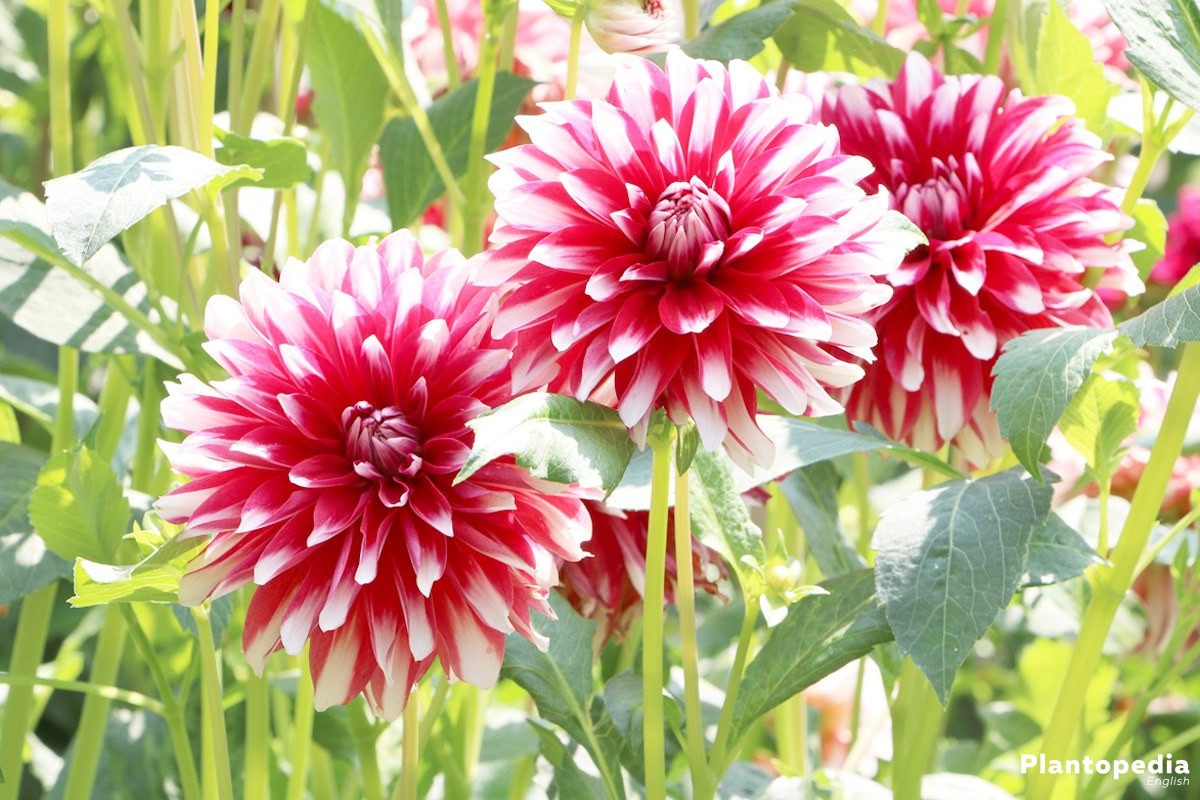
Care
To find the individual favorites among the more than 20,000 species worldwide is a greater challenge for the gardener than the professional cultivation. Because the furious plant family is based on a few species, the tuber plants have almost congruent requirement. Here, you will find out how you plant, care and overwinter the dahlia.
It is predominantly the garden dahlia which is cultivated in herbaceous borders and pots. To have a better overview of the cultivar-rich types, gardeners categorized in total ten groups which refer to the flower shape.
- Anemone-flowered dahlias
- Ball dahlias
- Single-flowered dahlias
- Collerette dahlias
- Cactus dahlias
- Peony-flowered dahlias
- Pompon dahlias
- Decorative dahlias
- Semi cactus dahlias
And in the group “Miscellaneous dahlias” all cultivars are summarized which are not classified otherwise.
Planting
As tubers with subtropical origin, the dahlias have different expectations when it comes to planting than local perennials. Therefore, please pay close attention to the following explanation regarding the correct spot, soil conditions, planting period and planting method.
Location
Dahlias are real sun-lovers, they love warm temperatures but cannot stand strong winds. These stunning flower beauties feel best in a sunny spot, if it is also warm and sheltered from the wind. Therefore, avoid a spot underneath trees, because not only the much-wanted sun light will be intercepted but also the rain.
The majestic types are threatened by windthrow which makes them love a job as fence watcher because in case of wind they can get much needed support there. Regardless of that, the place should have some sort of support, such as a balcony railing, a wood or house wall. Where this premise for dahlia types from 50 cm growth height cannot be fulfilled, a wooden pole will be inserted in to the ground during planting.
Substrate
Georginas prefer a nutrient-high soil which is highly permeable for water. A ground with a clayey-sandy and humus-light conditions is very welcomed. Look for a freshly wet planting spot which cannot suffer from water logging. An excess of moisture can lead to rotting of the tubers in a very short time. The plants will not recover from this.
Like most subtropical plants, dahlia thrive better in a slightly sour substrate than in alkaline soil. It is therefore advantageous to check the pH-level at the selected spot before planting with a test set. A pH-test does not require any kind of chemical knowledge and is obtainable for little money at the garden center or DIY store. A level between 6.5 and 7.5 is ideal.
For planting dahlias in a pot or balcony tub, good flower soil enriched with perlite, sand or lava granulate is advisable. The lesser the proportion of peat, the better quality is the substrate. For everyone, who enjoys mixing it themselves: Take two parts garden soil, one part leaf compost and one part perlite aeration particles or expanded clay.
Planting Time
Dahlia tubers do not take coldness and moisture well. The window of time for planting only opens when in spring the ground is completely defrosted and warmed up to at least 10 degree Celsius. Under normal weather conditions within our local boundaries, this is usually the case starting beginning of May. If you want to play it safe, wait for the ice men mid-May. Georginas can be planted until well into summer. The flowering period will last until the first frost.
Planting Method
A thorough preparation of the ground provides the dahlias perfect starting conditions. Break up the ground one spade deep and rake through strongly. Weeds, roots and stones need to be removed meticulously. Afterwards put out three liters of leaf compost or bark humus per square meter and lightly work the material into the soil. If the ground lacks permeability, add a little sand.
This is how you exemplarily plant dahlias:
- excavate about 20 cm plant pits 60-100 cm (depending on species) apart
- for dahlias with a growth height of over 50 cm put a support rod in the ground
- on the base of the hole scatter one tea spoon of horn shavings
- plant the dahlia tuber with the shoot buds facing upwards and cover with 3 to 5 cm of substrate
- press the soil well with your hands to reach good ground closure
- only water a little or not at all because water demand only starts with budding
If you come across a dahlia that has a tuber which has several smaller tubers, separate them. Or else, the shoots will get in each other’s way and the flower power will suffer.
Planting in a tub or balcony pot works according to the same scheme. Additionally, lay a drainage of inorganic material above the water drain in the pot bottom. Clay fragments, pebble stones of foamed clay balls work well. To avoid silting up of this aquiferous layer, cover it with a breathable fleece. The average planting distances can be calculated a little closer with 25 to 30 cm, especially for dwarf species.
A balanced treatment with water and nutrients as well as cutting at the right time and a comprehensive protection from greedy snails are part of the care program. Here, you can go into detail on these topics.
Watering
If places in freshly wet to moderately dry soil, the water treatment starts parallel to budding. From this point on, always water when the ground is dried 2-3 cm low. Check with your fingers, whether there is demand for water. Please make sure that the moisture get through to the deepest roots without creating waterlogging.
To keep the slightly sour pH-level in the ground, we recommend the use of collected rain or stale tap water. Directly water the root disc without wetting the blossoms or leaves. In the big dahlia gardens in Germany, watering happens overhead as there is a lack of personal for this time-intensive water treatment from below.
Fertilizing
If the dahlia receives horn shavings in the planting holes while planting, the need is satisfied for the first 4-6 weeks. After this every 3 to 4 weeks put on the earth leaf compost, bark humus, chicken manure, or another similar organic fertilizer. Superficially work the material in and water.
In the tub or balcony pot, administer from June to September every fortnight a liquid fertilizer for flowering plants and water with clear water afterwards as well. In preparation of the coming overwinter period, the nutrition supply ends during autumn at latest in September. This applies both to flower patch as well as tub plants.
Cutting
Rigorous cutting, pruning, and clipping are main pillars of the proper care treatment.
This is how you handle the cutting properly:
- remove one third of the stem on budding dahlia tubers, except for max. 4 to 5 main shoots
- pinching flowering shaft of 4 to 5 flower pairs to encourage bushy growth
- if the main eye gets color, side eyes can be clipped to help with flower size
- wilted flower stems can be cut over a strong, healthy leaf pear to promote a late bloom
Dahlias are beautiful as fresh cut flowers in a vase if they were cut the day of the bud opening. If you leave at least one leaf pair on the plant, it will sprout again from the remaining buds.
Prevention of Snails
Young dahlias are a delicacy for voracious slugs. Therefore, already when planting precautions should be put in place to keep the pest away. Complete defoliation can be avoided with a snail collar. In the flower patch, barriers made of sharp materials, such as grit or sawdust, keep the snail hordes away.
Snail fences in combination with beer traps inside the fenced area have been proven successful in private gardens. Regularly bring out coffee grounds on the substrate because caffeine is toxic for all snails. If due to a very strong pest infestation, you cannot avoid using slug pellets, please use crack or slit pitfalls to spare the harmless worm-housing snails.
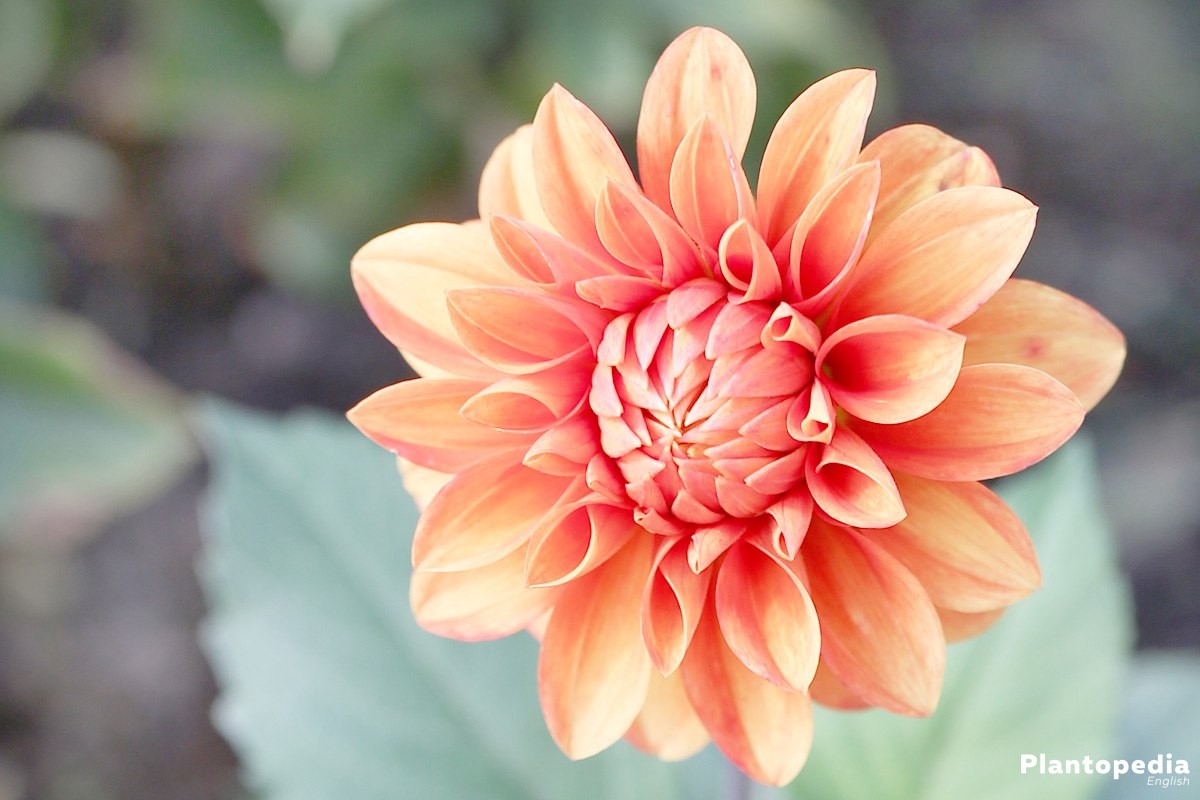
Overwinter
When in autumn the temperatures fall, the cold-sensitive dahlias need to settle to their winter home. At latest after the first frost, it is time to take the tubers out of the ground.
This is how to professionally do it:
- cut all shoots back to 6 cm
- take the tubers from the ground with a digging fork
- only carefully dust down the soil and do not wash
- cut off roots and rotten parts and powder cut wounds with charcoal cinder
When dahlias are taken out of the ground, they will not be stored right away. If there is no strong frost, the tubers will be laid out to dry for 3 to 4 days. This action prevents mildew and decay during the winter.
Storing
The conditions in the winter storage place are crucial to a harmless overwintering. Choose a cool, dark room with temperatures between 5 and 7 degree Celsius as well as low humidity.
To correctly store the dried dahlia tubers correctly, please choose one of the following options:
- put on a grid without the tubers touching
- wrap separately in newspaper and put on airy racks
- store in boxes with sand, sawdust or peat dust
- hang in nets or perforated plastic bags
While overwintering, it is sensible to repeatedly turn the dahlia tubers. Air out the room daily if possible but make sure that the temperature does not fall below zero. The about 6 cm short rest of the stem needs to stay on the plant because only from there a new shoot can develop in the next year.
Multiplication
A healthy overwintering of the dahlia tubers allows you the possibility of an easy multiplication with cuttings starting in January. For this purpose, the flower bulbs will be animated to budding to use the shoots as head cuttings. Per tuber, 10 to 20 offshoots are possible. With a little luck, you can be excited for the first flowering period of the young plants in the following year.
This is how the plan becomes fruitful:
- place an overwintered tuber in a tub with turf-sand in the way that the upper part of the stem is exposed
- wet the substrate with a delicate shower without wetting the shoot
- keep on the semi-shaded window sill or in a greenhouse from 15 to 17 degree and water regularly
Within 14 to 21 days the first shoots will sprout. From a growth height from 3 to 4 cm, break the cuttings off. Using a knife have been proven difficult because bacteria will be transferred with the plant juice.
Caring for the Cuttings
The broken-off cuttings are put in a box with a mix of normal soil and sand. It is useful to immerse the shooting ones in rooting compound. Cover the cultivation tray with a transparent hood to prevent the shoots from drying out. Keep the soil wet at the semi-shaded location and air out the cover daily.
Within 14 days all shoots will deliver a small root system. After that plant the young plants in separate pots for flower soil over a drainage of expanded clay. Until end of May, care for the young dahlias at a sunny place with temperatures around 18 degree Celsius. Ideally, you have a not-heated green house or a frost-free cold frame or hot bed. It is important that your sprouts gradually adapt to more sun light and higher temperatures.
In early Summer, plant the strong cuttings in a sunny, humus-rich patch. When getting regularly treated with water and fertilizer, many vital tubers will develop until autumn. Overwinter these the same way as the adult dahlias to be delighted by the wonderful blossoms in the next year.

